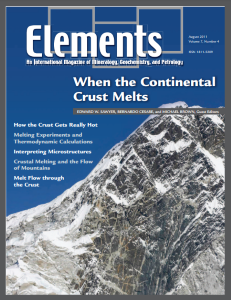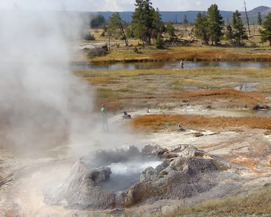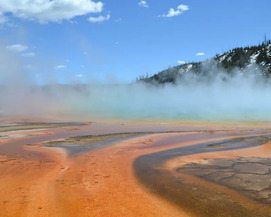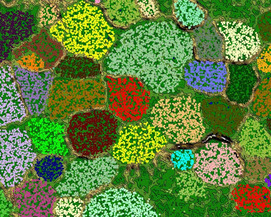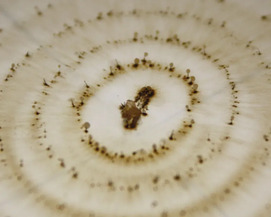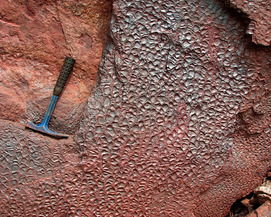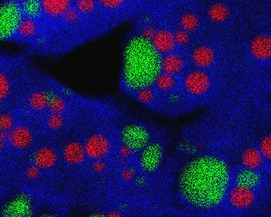
When the Continental Crust Melts
Edward W. Sawyer, Bernardo Cesare, and Michael Brown – Guest Editors
Table of Contents
Partial melting is the most important process affecting the continental crust. It is respon sible for the large scale compositional and density structure that has stabilized the crust over geological time. Partial melting occurs extensively in the deep crustal roots of moun tain ranges that form where continents col lide. The thin film of melt that develops on the edges and faces of mineral grains results in a substantial weakening of the crust, which concentrates deformation into the melt bearing rocks and allows them to deform faster. This issue of Elements deals with the source of the heat responsible for widespread melting and the information that can be retrieved from mineral assemblages and microstructures in lower crustal rocks. It also explores the mechanisms of melt transfer and the large scale geodynamic consequences of melting the crust as it deforms.
- When the Continental Crust Melts
- How Does the Continental Crust Get Really Hot?
- Is the Crucible Reproducible? Reconciling Melting Experiments with Thermodynamic Calculations
- Melted Rocks under the Microscope: Microstructures and Their Interpretation
- Crustal Melting and the Flow of Mountains
- Organizing Melt Flow through the Crust
American Meteorological Society
Australian Scientific Instruments (ASI)
Bruker
Cambridge University Press
CAMECA
Excalibur Mineral Corporation
FEI
PFA Labware
PSRD Discoveries
RockWare
Savillex
SPECTRO
Wiley-Blackwell
v7n5 TOURMALINE: FROM GEMSTONE TO GEOCHEMICAL INDICATOR
Guest editor: Darrell J. Henry and Barbara L. Dutrow (Louisiana State University)
From the Vikings’ sunstone to a modern piezometric pressure sensor, tourmaline is an intriguing mineral with a new degree of significance. Tourmaline was considered by 18th century physicists as the key to a grand unification theory relating heat, electricity, and magnetism, but new studies define its role as an indi cator of Earth’s processes. With its plethora of chem ical constituents and its wide stability range, from near surface conditions to the pressures and tem peratures of the mantle, tourmaline has become a valuable mineral for under standing crustal evolution. Tourmaline encapsulates a single mineral thermom eter, a provenance indicator, a fluid composition recorder, and a geochronometer. Although also prized as a gemstone, tourmaline is clearly more than meets the eye.
- Tourmaline: A Geologic DVD Darrell J. Henry (Louisiana State University) and Barbara L. Dutrow (Louisiana State University)
- Tourmaline the Indicator Mineral: From Atomic Arrangement to Viking Navigation Frank C. Hawthorne (University of Manitoba) and Dona M. Dirlam (Gemological Institute of America)
- Tourmaline Isotopes: No Element Left Behind Horst R. Marschall (University of Bristol) and Shao-Yong Jiang (Nanjing University)
- Tourmaline as a Recorder of Ore-Forming Processes John F. Slack (U.S. Geological Survey) and Robert B. Trumbull (GFZ German Research Centre for Geosciences)
- Tourmaline as a Petrologic Forensic Mineral: A Unique Recorder of Its Geologic Past Vincent J. van Hinsberg (University of Ottawa), Darrell J. Henry (Louisiana State University), and Barbara L. Dutrow (Louisiana State University)
- Tourmaline: The Kaleidoscopic Gemstone Federico Pezzotta (University of Milan) and Brendan M. Laurs (Gemological Institute of America)
- Cosmochemistry (February 2011)
- Iron in Earth Surface Systems (April 2011)
- Global Water Sustainability (June 2011)
- When the Continental Crust Melts (August 2011)
- Tourmaline (October 2011)
- Mine Wastes (December 2011)
Download 2012 Thematic Preview


